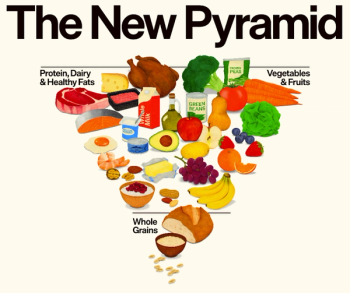
'Healthy Days': An early-warning system for at-risk patients in need
A simple measure to reduce avoidable ER visits and hospitalizations, and give back two more healthy days per month to people
From
Health care needs a better alert system for people before crisis hits — when they sense things aren’t quite right but they haven’t completely fallen apart yet. People need a button they can push when extra support would be useful but they don't know where to start.
That, in a nutshell, is what our team of clinicians and engineers has been working to bring to life. Our approach has been remarkably simple. We’ve combined automated check-ins and
Our
As it turns out, this brief interaction is a powerful tool that creates a moment of self-reflection for patients — and, for clinicians, efficiently captures several important dimensions of health. In piloting this approach over the past year, we've found that Healthy Days serves as a kind of early-warning system that has proven especially effective at identifying people with unmet healthcare needs.
Here's how it works: Every 90 days, people get a Healthy Days text message. If a patient's self-reported health falls below a certain threshold, we send a follow-up note asking if they'd like a health care provider to call them within the next 48 hours. One-third of the patients who complete the survey meet the outreach threshold, and roughly half of that group requests a clinician callback.
In some cases, the cause of the unhealthy days is obvious to patient and clinician alike — a recent knee injury for example — and the appropriate care is relatively straightforward. Far more often, though, our clinicians don't uncover a single driver of poor health, but rather a constellation of factors that are making people feel unwell, both physically and mentally. One-third of patients who speak with a clinician are referred to our case management program for chronic or complex conditions.
Perhaps more important than showing up when someone raises their hand for help in the moment, what we’re finding is that the majority of people who request a callback have been otherwise disengaged from the health care system. Roughly 50% don't have an established primary care provider, and very few are seeing (or have ever seen) a therapist or psychiatrist.
Reaching these disengaged patients didn't require technology we didn't already have; it required a mindset shift and the willingness for discovery around how we can lower the bar to care and quite literally meet people where they are.
Unlike a traditional office visit, these interactions don't require a weeks-long wait, disruptions to work or family responsibilities, or a copay. And, they offer more than traditional treatment. Clinicians educate patients about their health benefits and connect them to relevant resources including primary care or mental-health appointments (virtual or in-person), consultations with medical experts, and assistance programs that address barriers to care such as transportation or financial needs.
Our clinicians spend 30 minutes with patients, on average, and stay on the phone for as long as it takes to build trust, uncover clinically relevant info, and ensure patients understand the next steps.
This is time well spent. People who speak with a clinician report two more healthy days per month, on average, the next time they take the survey. Imagine if every time you spent 30 minutes with a clinician, you got two more days of health back into your month.
Research has shown that unhealthy days are a
Most important of all, think of what those two extra days mean to that individual. Those are two more days of being present with friends and family, being productive at work, being active outdoors — whatever makes that person feel whole.
We chose Healthy Days as our true north measure because it's evidence-based and patient-centered; it captures how people feel about their health and how that impacts their life. For our team, it's also a constant reminder of why we chose to work in healthcare: to deliver real outcomes that are meaningful for people .
Ami Parekh, MD, JD is the chief health officer at Included Health. Phil Zuzolo, MD, a general practice physician, is the medical director for clinical strategy and outcomes at Included Health.
Newsletter
Stay informed and empowered with Medical Economics enewsletter, delivering expert insights, financial strategies, practice management tips and technology trends — tailored for today’s physicians.








